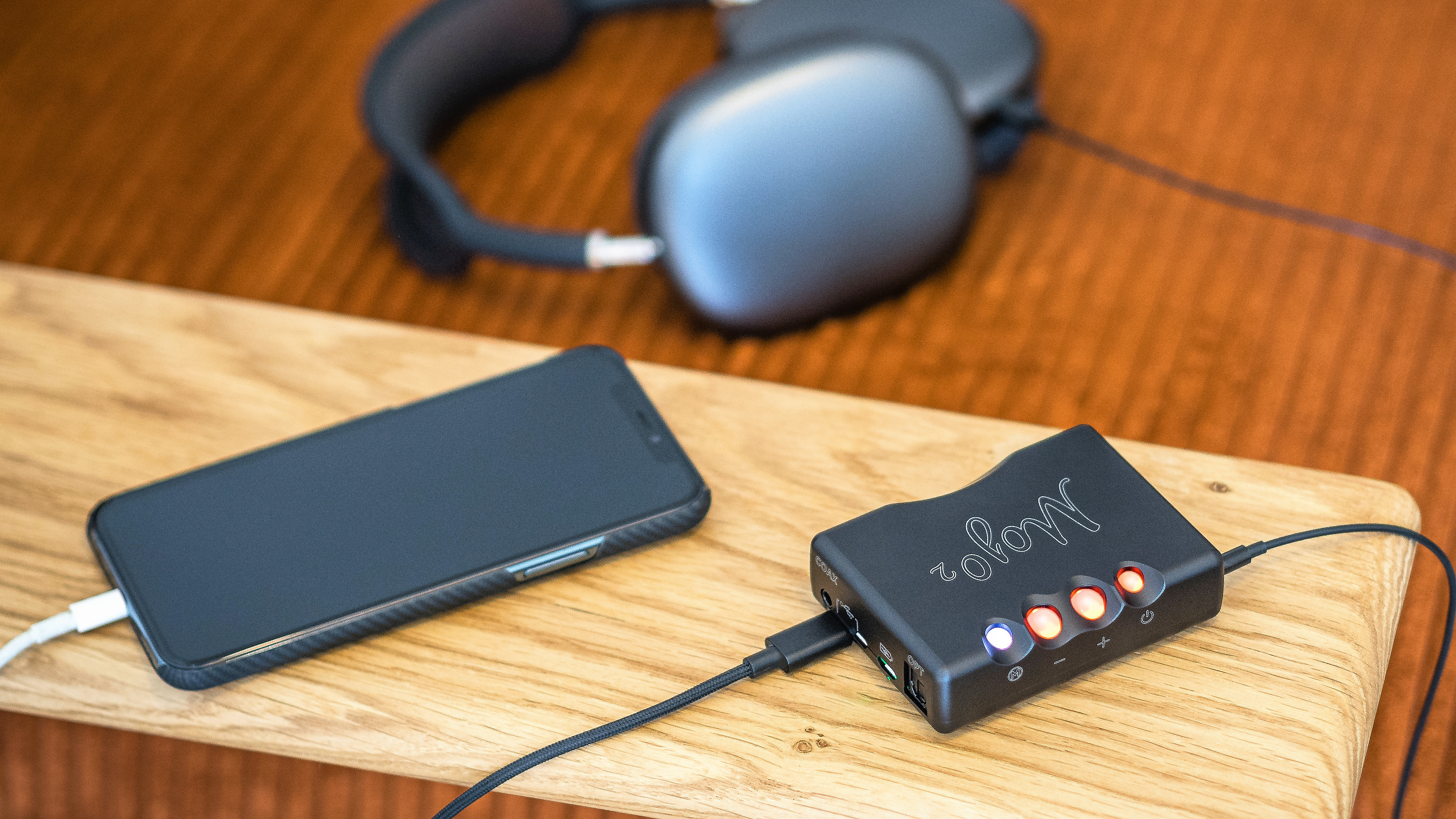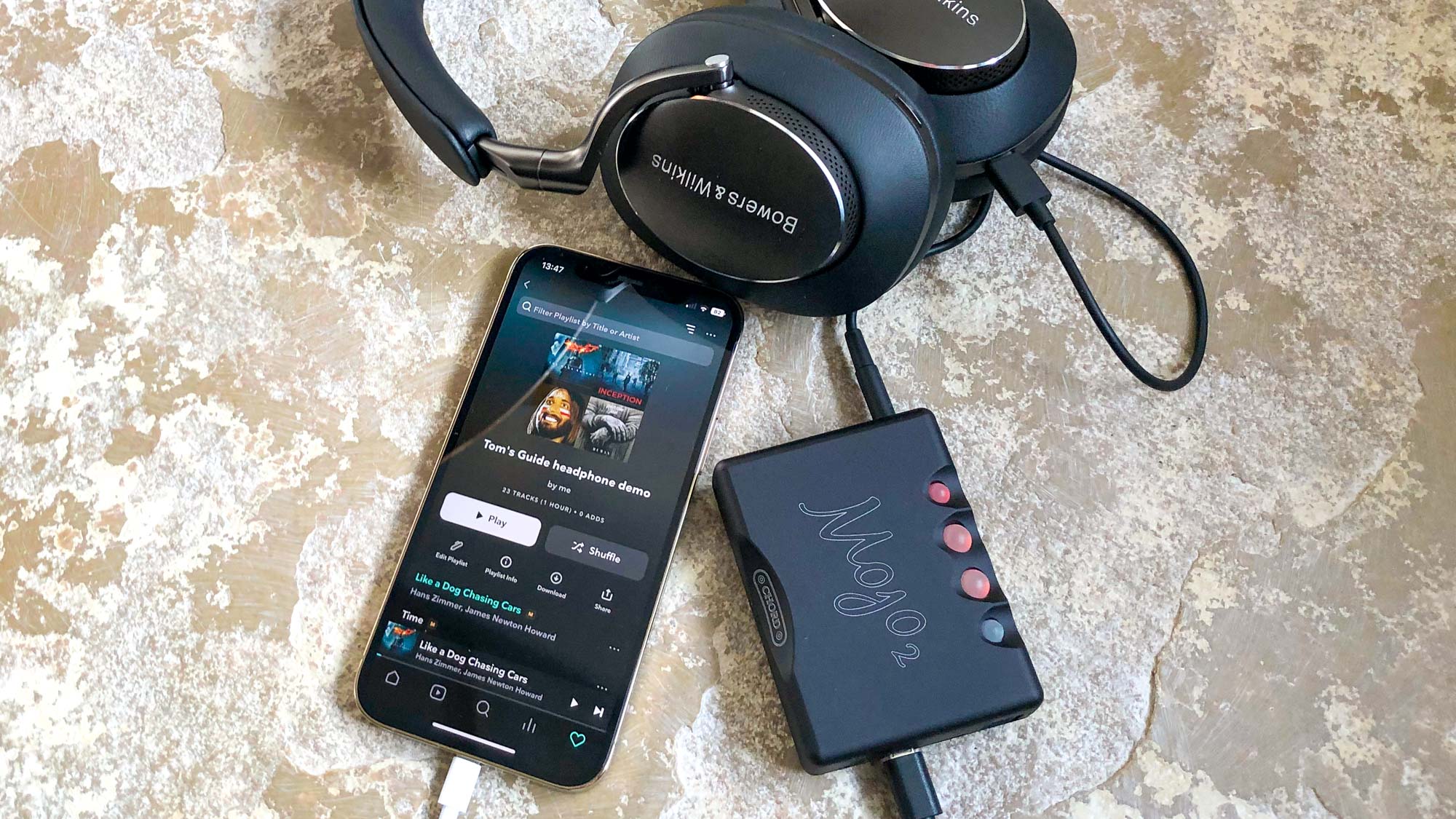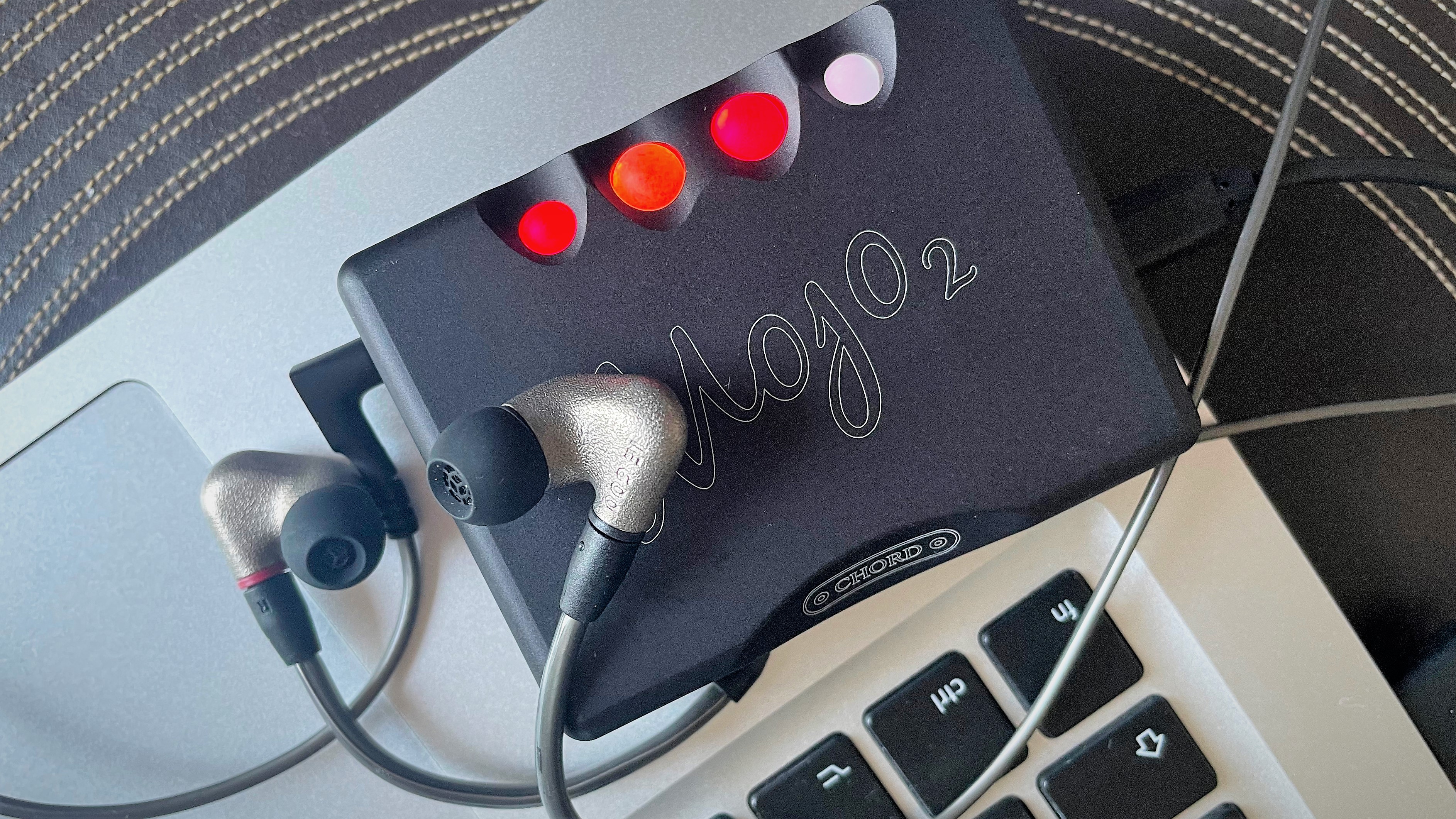I just tested the best iPhone audio upgrade ever
I went back to wired headphones and here's how I improved my iPhone audio

As someone who cares a lot about sound quality, there are plenty of reasons why I still choose wired headphones over wireless, even though some of the best wireless headphones make great sound despite the bandwidth limitations of Bluetooth even with the latest sophisticated codecs.
As audio editor, I'm lucky enough to get to try out all manner of headphones in all kinds of shapes and sizes, from the Sony WH-1000XM5 headphones to the recently launched Bowers & Wilkins Px8 flagship headphones (pictured), which both facilitate wired and wireless connectivity, to wired-only in-ear monitors like the Sennheiser IE 600.
Although I spend a lot of time listening to music using an iPhone connected to whatever pair of wireless headphones or earbuds I’m reviewing, for personal listening I’ve recently found myself gravitating to wired headphones to keep me grounded to what a non-compressed audio signal sounds like on a pair of headphones free from digital signal processing.
The Chord Mojo 2 simply lets your headphones and whatever music you're listening to sing.
Listening to music on the move through wired headphones is not as straight forward as it once was. Of course, using an iPhone (or almost any smartphone) as a music playback source is tricky in the wireless world that emerged since Apple dropped the headphone jack from the iPhone 7 in 2016.
But there are a bunch of portable devices out there called DACs that can bring considerable audio gains to any modern digital playback device with a port. And I've been getting myself acquainted with a next-gen model that's been boosting my music listening experience on-the-go.

DAC magic
The Chord Electronics Mojo 2 DAC I've been using is also an headphone amplifier, and at $775 on Amazon it's most definitely aimed at quality audio fans with very deep pockets. That sounds steep, I know, but if you care about the sound quality of your music and already have a subscription to one of the best music streaming services delivering CD-quality and/or hi-res lossless streams, then you owe it to yourself to hear your music through a DAC connected to a pair of wired headphones.
I reviewed the original Chord Mojo in a previous role, and the Mojo 2 performs even better. For a device that fits into the palm of your hand, it's an excellent choice for music fans looking to boost sound quality on the move. Although undeniably expensive it can be easily partnered with portable playback devices connected via USB port or digital optical audio. To connect it to my iPhone 12 Pro, I invested in a Lightning to USB Camera Adaptor costing $10 at Amazon.
Get instant access to breaking news, the hottest reviews, great deals and helpful tips.
It's something of an adjustment getting reacquainted with a cabled music system after the freedom that wireless connectivity brings, but any mild inconvenience is worth it and the audio benefits speak for themselves. Music sounded richer and more natural without any boost to enhance particular frequencies, although the Mojo does have EQ adjustment if you really must tinker with the frequency balance.
The soundstage felt more solid with vocalist clearly placed at the center of the music creating an almost physical, three-dimensional sonic image in my head, and instruments just sounded cleaner and far more real than anything I'd heard using the same pair of headphones connected wirelessly. The Mojo 2 simply lets your headphones and whatever music you're listening to sing.
As hi-res audio becomes the norm with the likes of big players including Apple Music and Spotify HiFi (although delayed) bringing lossless audio to the masses, the appeal of an add-on DAC that can do sonic justice to the high-quality audio files is more appealing than ever. And it can improve the sound of compressed music streams, too.

What is a DAC?
Don't worry if you've never heard of a DAC; you're not alone. Simply put, a DAC is a 'digital-to-analog convertor,' which as the name suggests, means it takes a digital audio signal (from the likes of a music streaming service, say) and converts it to an analog one.
You see, it's analog signals, not digital ones, that drive the speakers inside the audio device you're listening on. So some form of conversion has to happen between the audio signal served up by whatever digital music file you're playing and the analog-driven speakers that produce the sounds that arrive at your ears.
DACs are found in all kinds of audio playback devices, including the best laptops, and best tablets, but adding a standalone DAC will always help it sound better.
You may wonder why this is the case when surely the digital signal conversion is expertly taken care of by the DAC inside whatever playback device you have your headphones plugged into. The thing is, music doesn't always sound as good as it could through the built-in DAC on many devices, and adding a quality DAC like Chord's Mojo 2 will result in a better audio experience for quality audio fans and music lovers alike.

Lee was Tom's Guide's audio editor, where he covered all things audio for Tom's Guide, including headphones, wireless speakers and soundbars and loves to connect and share the mindfulness benefits that listening to music in the very best quality can bring. As a former editor of the U.K.'s Hi-Fi Choice magazine, Lee is passionate about all kinds of audio tech and has been providing sound advice to enable consumers to make informed buying decisions since he joined Which? magazine as a product tester in the 1990s. Lee has joined the passionate audio experts at audiograde.uk where he writes about luxury audio and Hi-Fi.
